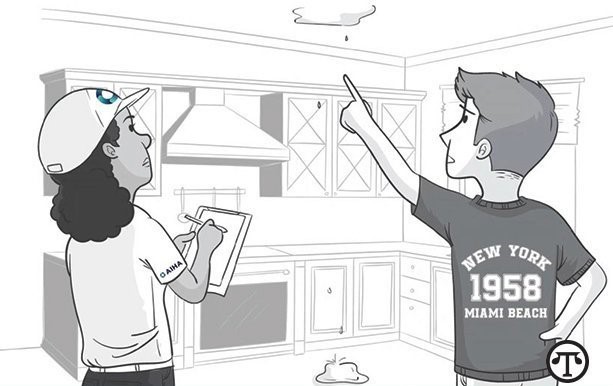What to know about mold and mildew
 For your family’s health and your home’s structural integrity, don’t let mold grow.
For your family’s health and your home’s structural integrity, don’t let mold grow.
(NAPSI) — If you’re like a lot of homeowners, your domicile is in danger from an insidious, invisible growth—mold—and you don’t even know it. That’s because for many people, mold conjures up images of smelly, green and black growth that can cause serious respiratory issues. It is often found in a home after an intrusive water event, such as a flood or a severe rainstorm. The reality is, just about every home has mold, though it only becomes a concern when there are moist building materials and you begin to notice visible mold growth and can smell it.
Why To Fight Mold
Mold and water damage can have a negative effect on your and your family’s health, as well as on the safety and structure of your home. People with allergies to mold may experience sneezing, runny nose, red eyes, rash and upper respiratory problems.
Homes in areas where there’s a potential for flooding, tornadoes, or hurricanes are especially at risk. Mold typically grows in damp places such as basements and crawlspaces. Apart from floods, the four major causes of mold and water damage in residences are: leaks in the building envelope (that is, around window frames, roof); unattended plumbing leaks; high humidity levels (particularly from unvented or improperly vented indoor moisture sources, such as kitchens, bathrooms, and clothes dryers); and condensation on cool surfaces (on kitchen and bathroom surfaces, on window frames, in basements).
How To Fight Mold
The good news is there are steps you can take to identify and remove mold, and prevent its re-occurrence by keeping the water out of the house. AIHA (formerly American Industrial Hygiene Association), the organization for scientists and professionals committed to preserving and ensuring occupational and environmental health and safety (OEHS) in the workplace and community, created free resources for consumers including: “Facts About Mold: A Consumer Focus,” a downloadable guide to the problems of mold growth and what you can do to prevent it; and a brief video, “What is mold? Who’s affected?”—a quick guide to the dangers of mold in your home.
Who Can Fight Mold
If mold damage is severe, it may be time to seek the help of an OEHS professional or Certified Industrial Hygienist with extensive mold investigation and remediation experience. You can find a list of OEHS experts at www.aiha.org/public-resources/consultants-listing.
Responsible journalism is hard work!
It is also expensive!
If you enjoy reading The Town Line and the good news we bring you each week, would you consider a donation to help us continue the work we’re doing?
The Town Line is a 501(c)(3) nonprofit private foundation, and all donations are tax deductible under the Internal Revenue Service code.
To help, please visit our online donation page or mail a check payable to The Town Line, PO Box 89, South China, ME 04358. Your contribution is appreciated!


Leave a Reply
Want to join the discussion?Feel free to contribute!